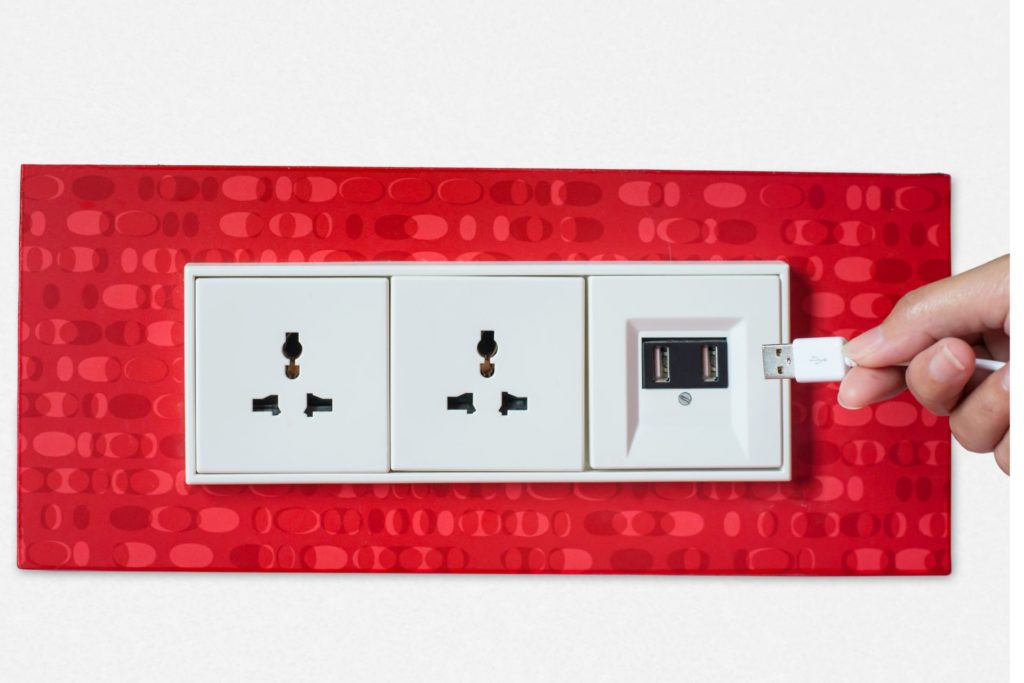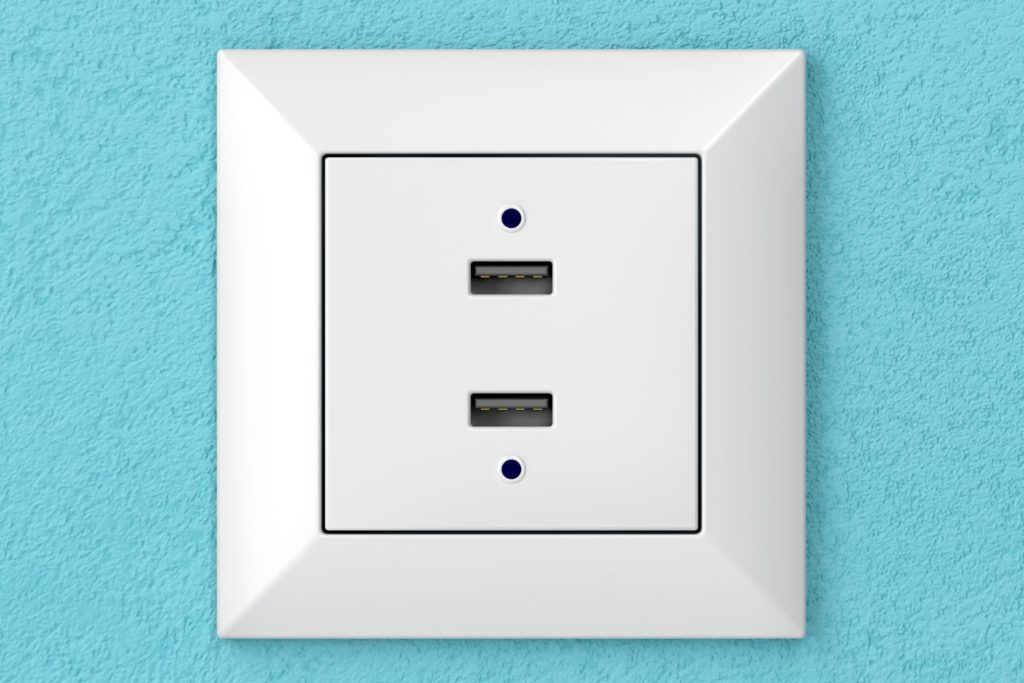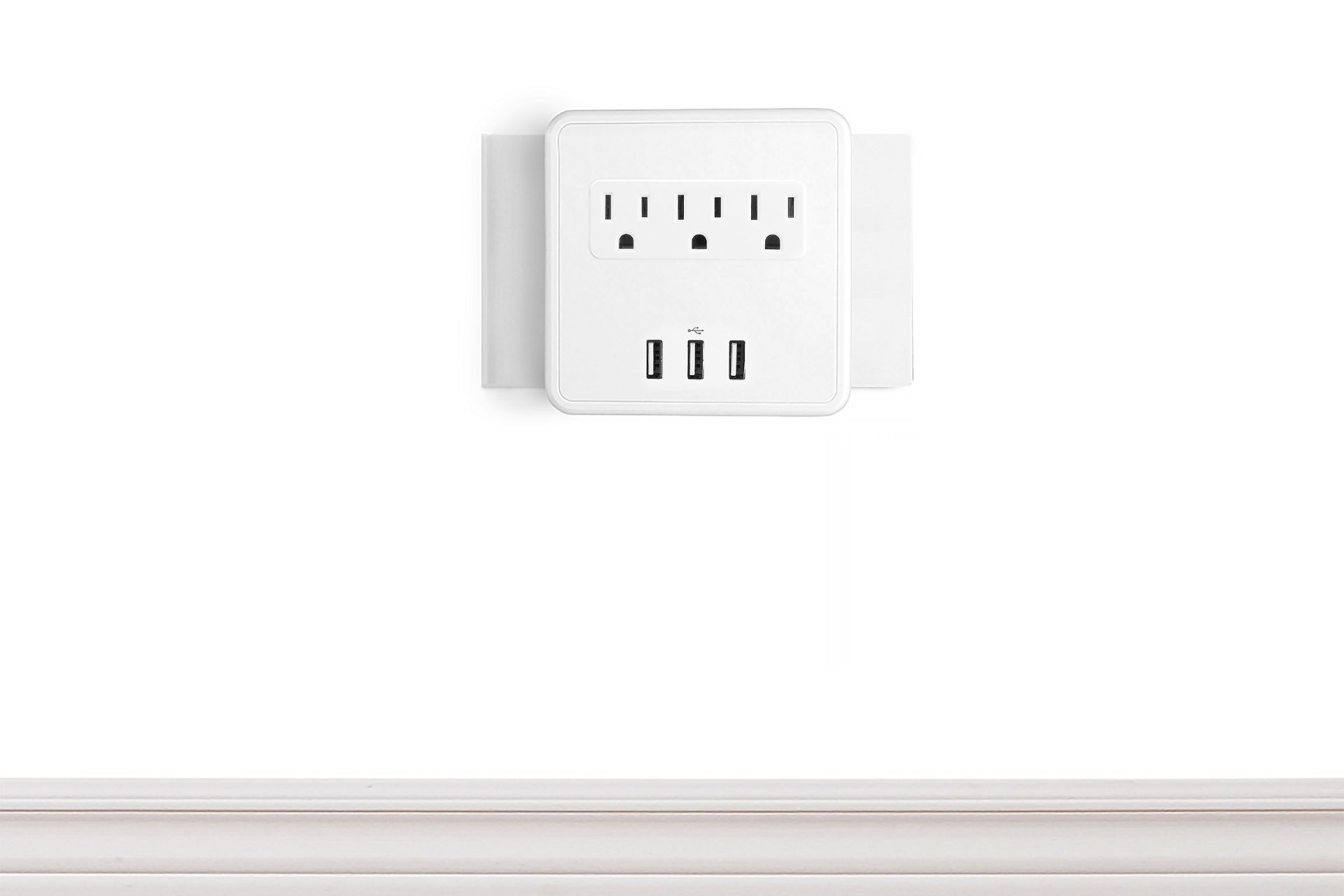If you still have ordinary wall sockets, you are missing out. USB sockets are the way to go these days. If you already have USB sockets, you are probably wondering whether they will continue to draw power when they are not in use.
Do USB Sockets draw Power When Not In Use?
USB sockets draw power when not in use. This is called idle current. However, the amount of electricity a USB socket uses is meager. You are looking at 0.05 watts at the most, which amounts to six cents annually.
| USB | Power |
| 1.0 | 0.5A |
| 1.1 | 0.5A |
| 2.0 | 0.5A |
| 3.0 | 0.9A |
| 3.1 | 3A |
You will find LED indicators on many USB sockets. Those LED indicators use electricity. Therefore, you cannot avoid the idle current.
This is why many experts discourage consumers from leaving their chargers in the socket. This practice persists because it is convenient. Most consumers want to connect their phone to the charger the moment they reach the outlet.
They don’t want to go through the hassle of finding their charger, pushing it into the socket, and connecting the end to their phone. A charger that is always in the socket is much easier to operate.
However, chargers are not quite as safe as people think. They are vulnerable to extreme heat and moisture. Therefore, leaving a charger plugged in overnight may cause a short circuit or arc.
If you leave a device in the USB socket, it will use even more electricity. USB devices use electricity to create and maintain a channel of communication.
You can disable this feature in the power settings. If you don’t, the socket will continue to draw a current.
It is worth noting that idle current is not a problem for some USB sockets. For instance, if your socket has a physical switch, flipping it to the off position will stop the socket from consuming power when it doesn’t have a connected device.
You can install USB sockets with spring-loaded doors. The socket cannot consume electricity when the doors are closed.
Vehicles are a bit different. Many of them have USB ports that work even when the car is off. For that reason, many vehicle owners are hesitant to leave their devices connected to a USB cable.
They don’t want the device in question to drain the battery overnight. A USB port’s electrical draw is too small to drain a car battery overnight.
Vehicles use the onboard battery to operate the USB port, anti-theft alarms, and other accessories when the car stops running. Individually, these accessories cannot drain the onboard battery.
But if you run them all simultaneously, they can become a significant load. Some modern vehicles do not allow USB sockets to work when they are off.
If you’re new to USB sockets, this is what you should know:
1). Compatible WIth Other USB
USB sockets can work with any device that requires a USB connection. USB chargers cannot damage your equipment. If anything, they are superior to ordinary sockets and chargers in this arena.

USB sockets deliver the appropriate volume of electrical current. They will work in tandem with your appliances to prevent the batteries from overloading or overheating.
2). Charging Time Depends Upon Amps
The charging duration will depend on the device you want to charge. For instance, you can charge smartphones at a relatively rapid rate because they need just 1 amp of current.
However, tablets are a little more demanding. They need 2.1 amps to charge correctly. Therefore, it may take longer for a USB charger to charge a tablet fully. This is also true for laptops and other devices with higher electrical demands.
3). USB Sockets Are Safe
For the most part, USB sockets are safe. You also offer fast-charging features. However, the quality of the USB socket matters. Some sockets are poorly made, which is why they are so cheap.
As such, don’t be surprised if they take longer to charge. They are also more likely to overheat. People use these cheap options because they want to save money.
But you will spend more money in the long run because you must buy replacements once your old phones, tablets, and USB sockets fail.
Read Can I Use A Higher Watt Charger For My Phone?
How Do I Know If My USB Is Power Drawn?
Some people do not expect USB sockets to consume electricity unless a device is connected. After all, on their own, USB sockets do not use electricity. They are tools for delivering a current.
They have no reason to transmit electricity unless you attach a device that needs power. However, USB sockets use tiny amounts of electrical current.
Fortunately, they only use 0.05 watts, which is very little. An idle USB socket will cost you less than a dollar a year. USB cables are different. They don’t use electricity unless you attach a device.
Therefore, you can leave them plugged in. They won’t do any harm. The layperson has no way of determining whether or not an idle USB socket is drawing a current.
You have to take your technician’s word for it when they tell you that an idle USB socket draws a current.
Why Use USB Sockets Even If It Is Power Drawn?

USB sockets don’t make sense to some homeowners. USB sockets are costly. You can check the price on Amazon. As such, you can see why some consumers are unwilling to replace their wall outlets. But USB sockets have numerous benefits that justify the cost, including:
1). Saves Space
Believe it or not, you can save space with USB sockets. Ordinary sockets work with bulky adapters that can easily limit the number of devices you can charge simultaneously.
But USB sockets work with USB cables, which are incredibly small. They can easily fit in tight spaces and around tricky corners.
2). Versatility
With USB sockets, you can charge different devices using the same cable. You don’t have to buy separate adapters for your lamps, flashlights, clocks, or any other appliance in your home.
This versatility saves you money because USB cables are cheaper than conventional adapters.
3). Accessibility
USB sockets will increase the number of charging stations for your phones and tablets. The residents of most homes are constantly fighting over the limited charging stations in the vicinity.
In many cases, they will concentrate their mobile devices around the one charging station they have in the house. But if you have USB sockets scattered everywhere, you can charge your mobile devices from any room that fits your needs.
4). Aesthetics
USB sockets have a tidier appearance than conventional wall outlets. They usually fade into the background instead of ruining your home’s decor.
Admittedly, most homeowners do not care about the visual appearance of the sockets. But if you want the outlets to blend into the background, get USB sockets.
5). Fast Charging Rate
A USB socket will charge the phone faster than a computer. Many consumers use their computers and laptops to charge their mobile devices because they don’t have enough charging stations.
However, while a computer can fully charge your phone or tablet, it will charge these devices slowly. Even if you have some accessible wall outlets, you can use your USB socket to charge your phone faster than an adapter.
The USB outlet delivers the current you need without overloading your devices. Even though it isn’t encouraged, you can leave your device plugged in overnight without ruining the battery.
These sockets do not have significant disadvantages. Their efficiency makes them very inexpensive to run. You will spend a few cents each year on their idle current. They also support fast charging.
Some people have argued that USB sockets are more durable. But that is a difficult claim to prove. All in all, if you have to choose between ordinary outlets and USB sockets, get the USB sockets.

